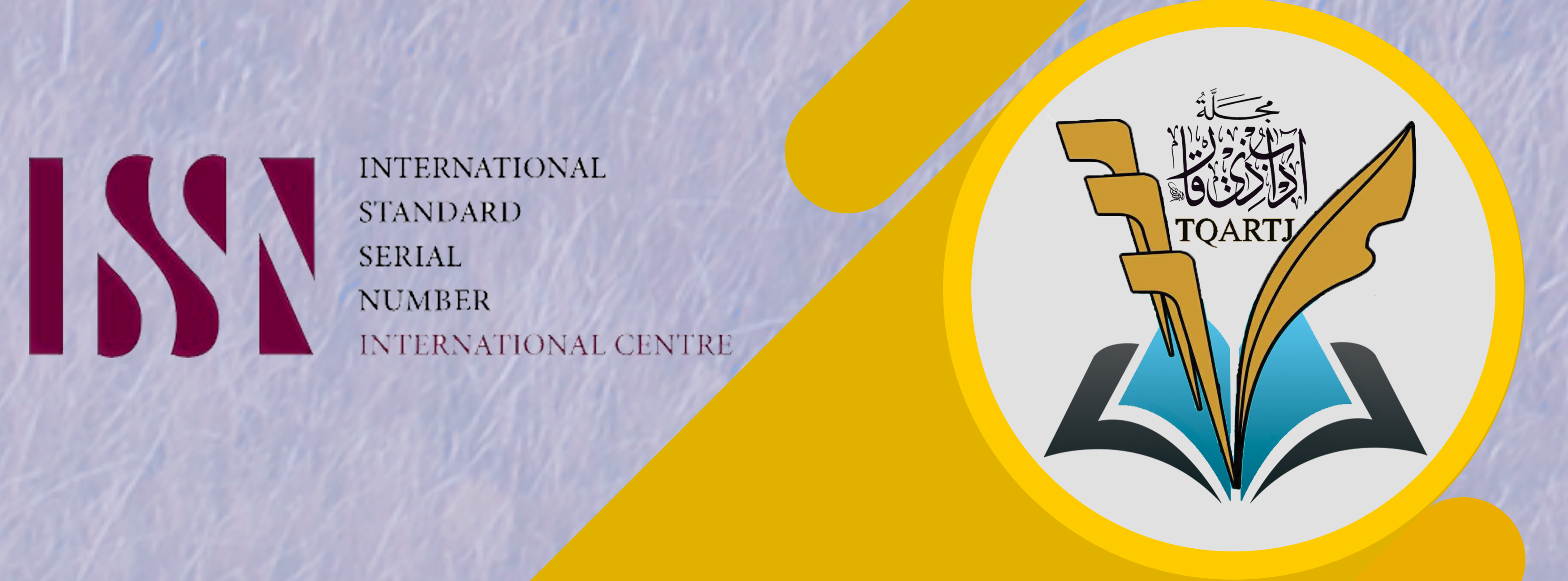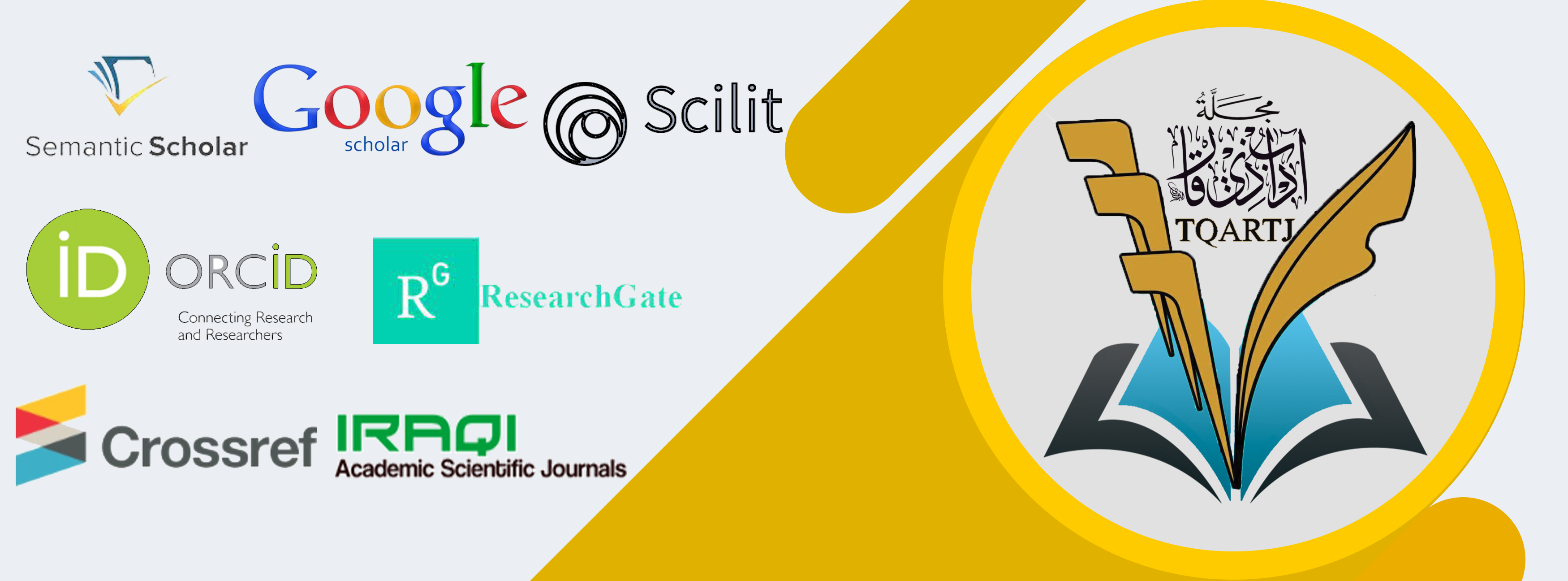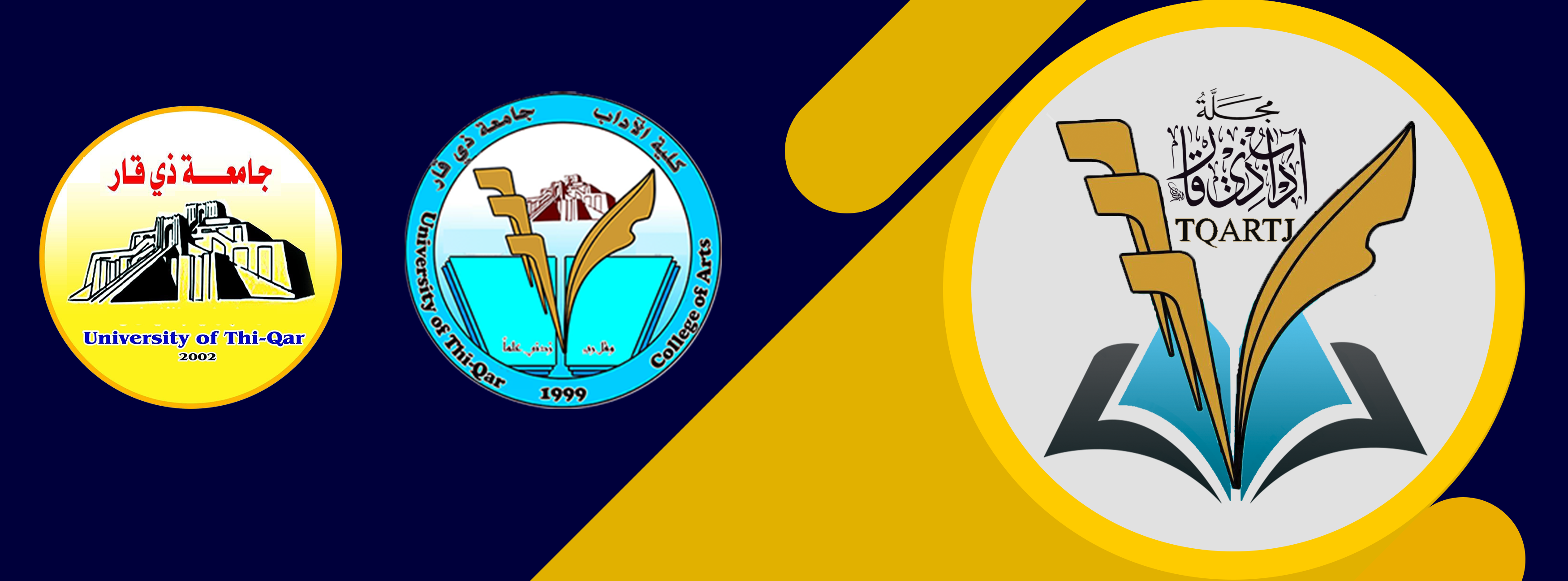المردود البيئي والصحي لتلوث الهواء والتربة الناتج عن مواقع الطمر الصحي في محافظة ذي قار
DOI:
https://doi.org/10.32792/tqartj.v2i43.487الكلمات المفتاحية:
المردود البيئي، الطمر الصحي، المحدد البيئي، تلوث الهواء، تلوث التربة.الملخص
اشتمل الرصد المكاني لمواقع الطمر الصحي في عموم محافظة ذي قار وبواقع خمسة اقضية إدارية في ظل المحددات البيئية لتلوث الهواء والتربة تباينت تراكيز غاز اول أوكسيد الكاربون (Co) مكانياً وزمانياً في مواقع الطمر، إذ سجل اعلى تركيز لها في فصل الشتاء (31.64 PPm) اما غاز الفورمالدهايد( HCHO) (PP 3.28) اما مكانياً سجل موقع الطمر في مدينة الناصرية بأعلى تركيز (40.6 ppm , 5.8 ppm) لغاز (Co, HCHo) على التوالي ،بسبب كمية النفايات ونوعيتها التي تطرح في الوسط البيئي وتتعرض للحرق العشوائي يومياً وعند مقارنة نتائج الرصد الميداني لتلوث الهواء بغاز اول اوكسيد الكاربون مع المحدد البيئي والتأثير الصحي يتضح بأنه عدد من مواقع الطمر تجاوزت المحدد البيئي لمدة ساعة ومنها طمر( الناصرية صيفا وشتاءاً بينما لم يتجاوز جميع المواقع ونتائجها المثبتة في المعدل المكاني المحدد البيئي والبالغ (PPM 35) ساعة، وتشير التأثيرات الصحية لغاز (Co) بأن اشدها سجلت في فصل الشتاء في موقع طمر الناصرية ضمن التلوث الشديد وتسبب ( صعوبة في النطق والقابلية على الانهيار)،وسجلت مواقع الطمر الاخرى ( ضمن التلوث الشديد) والذي يسبب ( ضعف في العضلات والاعماء والشهور بالدوخة)، ويظهر من التأثير الصحي لغاز (HCHO) ،بأن موقع طمر الناصرية ضمن ( التلوث الشديد) الذي يسبب ( حرق العين) والجهاز التنفسي فضلاً عن انهمار الدموع وصعوبة التنفس في حين جميع مواقع الطمر الاخرى في عموم المحافظة سجلت ( تلوث متوسط) اما تلوث التربة بالعناصر الثقيلة سجل اعلى تركيز لعنصر الحديد (Fe) في موقع طمر الناصرية بواقع (252ميكروغرام /م3) ،وحل في الترتيب الثاني موقع طمر الشطرة (182 ملغم/م3)، وجاء تركز النحاس في موقع الطمر الصحي في الشطرة بواقع (40 ميكروغرام/م3) ثم حل في الترتيب الثاني موقع طمر الناصرية بواقع (34 ميكروغرام/ م3)، وان اعلى تركيز للرصاص سجل في موقع طمر الناصرية بواقع (14.5) ويظهر ايضا بأن جميع مواقع الطمر تجاوزت المحدد البيئي البالغ (5) ولذلك يسبب هذا العنصر تهيجاً في أغشية الشعب الهوائية للجهاز التنفسي، اما الكادميوم احتل موقع طمر الناصرية اعلى تركيز (0.182) وجاء في الترتيب الثاني موقع طمر الرفاعي بتركيز (0.163) ، جميع مواقع الطمر تجاوزت المحدد البيئي البالغ (0.01).
التنزيلات
المراجع
Ahmed, Ziyad Wahab: “Environmental Analysis of Geographic Factors Affecting the Quantity and Quality of Precipitation in Thi Qar Governorate” (Master’s thesis, College of Education, University of Basra, 2007).
Al-Asadi, Kifah Saleh, and Mahmoud Badr Al-Samie: “The Impact of Waste Disposal from the Basra Refinery on the Pollution of Surrounding Agricultural Land” (Accepted research paper, 2002).
Islam, Ahmed Medhat: “Pollution: The Problem of Our Time” (Monthly book series published by the National Council for Culture, Arts, and Literature, Kuwait).
Al-Barak, Amani Hussein Abdul Razzaq: “Geographical Analysis of Soil Pollution in Basra Governorate” (Unpublished master’s thesis, College of Education, University of Basra, 2010).
Al-Basam, Khaldoun, and Ardini, Abdul Karim: “Lead Pollution in Baghdad City” (Journal of Environment and Development, Issue 1, 1981).
Balbaa, Abdel Monem: “A World Surrounded by Pollution” (Alexandria, 2000).
Al-Bayati, Adnan: “Air Pollution in the Arab World: Between Development Necessities and Environmental Safety” (Arab Affairs Journal, Issue 79, 1994).
Al-Janabi, Ayed Jassim Taameh: “Environmental Pollution and Its Remedies” (Published research paper, Iraqi Geographical Society Journal, Volume 1, Issue 55, 2009).
Hassan, Fathiya Mohamed: “Environmental Issues” (First edition, Arab Community Library, Cairo, 2010).
Al-Haffar, Saeed Mohamed: “The Arab Environmental Encyclopedia” (Volume 2: Pollution and Its Economics, 1988).
Zaghloul, Rashid Abdel Fattah: “Environmental Pollution: Problems and Solutions” (First edition, Al-Huda Printing House, Cairo, Egypt, 2016).
Al-Saad, Hamed Talib, and Nader Abdul Salman: “Air Pollution” (Published by the Marine Sciences Center, University of Basra, First edition, 2006).
Shatia, Dargham Abdul Latif, and Ahmed Raafat Ghadba: “Selecting Optimal Waste Dump Sites in the West Bank Using Geographic Information Systems (GIS)” (Published research available at this link).
Al-Shalal, Essam Mujjad: “Environmental Pollution” (Published by Omar Al-Mukhtar University, White Libya, First edition, 1996).
Al-Akidi, Walid Khaled Al-Baidooloji: “Survey and Classification of Soil” (College of Agriculture, University of Baghdad, Directorate of Printing and Publishing, University of Mosul, 1986).
Al-Umari, Muthanna Abdul Razzaq: “Environmental Pollution” (Second edition, Wael Publishing and Distribution, Amman, 2010).
Al-Kallabi, Anwar Sabah Mohammed: “Environmental Assessment of Heavy Element Concentrations in the Soil of Al-Majd District” (Published in Al-Qadisiyah Journal for Humanities, Volume 23, Issue 3, 2020).
Mani, Ahmed Ghazi: “Ways to Protect and Improve the Environment and Factories” (Revised edition, Al-Tarjuman Publishing House, Baghdad, 1989).
Al-Mu’min, Fuad Hameed, and Abdul Ali Al-Khayat: “Public Health and Environmental Pollution” (Printed by Dar Al-Kutub for Printing and Publishing, Mosul, 1993).
Milani, Kenneth: “Biology of Pollution” (Translated by Kamal Mahdi Al-Tamimi, First edition, Baghdad, General Cultural Affairs House, 1994).
Al-Wandi, Sajida Saeed Aziz: “Effect of Some Heavy Elements on Certain Physiological Aspects in Yellow Corn and Tomato” (Master’s thesis, University of Anbar, College of Science, Unpublished, 2006).
Person, J., and R.P. Stewart: “Predicting the Carboxyhemoglobin Level Resulting from Carbon Monoxide Exposure” (Journal of International Association of Physiological Sciences, Volume 39, Issue 4, pp. 637-638).
Wikipedia
Governmental Entities:
Republic of Iraq, Ministry of Environment: “Iraqi Official Gazette, Issue 4225, January 9, 2012.”
Republic of Iraq, Ministry of Environment: “Environmental Guidelines for Industrial, Agricultural, and Service Projects” (1991).
التنزيلات
منشور
إصدار
القسم
الرخصة
الحقوق الفكرية (c) 2023 Ass.Prof PhD Abbas Zghair Muhaisen

هذا العمل مرخص بموجب Creative Commons Attribution 4.0 International License.
تطبق المجلة رخصة المشاع الابداعي (a Creative Commons Attribution 4.0 International) . تسمح هذه الرخصة للمؤلفين بالاحتفاظ بحقوق النشر لأوراقهم. ولكن هذه الرخصة تسمح لأي مستخدم بتحميل، طباعة، استخراج، إعادة استخدام، أرشفة، وتوزيع المقال، طالما يتم إعطاء الائتمان المناسب للمؤلفين ومصدر العمل. تضمن الرخصة أن يكون المقال متاحًا على نطاق واسع قدر الإمكان وتضمين المقال في أي أرشيف علمي.



















